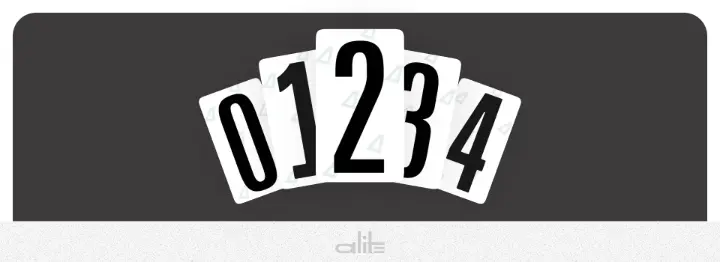The biggest trap is believing the marketing hype. Many drivers assume these films make a car “invisible,” but antiradar stickers are designed to disrupt how cameras interpret reflected light rather than erase the plate. The plate remains readable to people on the street, yet automated systems are more likely to capture a blurred or overexposed frame. Expecting a magic cloak leads to disappointment and risky behavior on the road. A realistic mindset treats the product as a privacy aid and a protective layer—not a license to speed or ignore rules.
Drivers also overlook how lighting changes performance. Street lamps, infrared flashes, and wet pavement can all alter reflections, so results vary. The right takeaway is simple: these solutions reduce consistent machine readability; they do not guarantee total immunity from scans. For drivers who understand this, the technology becomes a helpful layer of defense rather than a disappointment. Choosing a quality anti radar license plate sticker or investing in a durable license plate film cover makes a noticeable difference, since premium materials are designed to perform under rain, snow, and glare
Rushing the install of an anti radar sticker number plate
Even a great film underperforms if applied poorly. Bubbles, dust, or crooked alignment create uneven optical surfaces, and an anti radar sticker number plate - https://no-fines.com relies on uniform coverage to scatter light effectively. Quick, careless installs are the fastest path to “it didn’t work,” when the real culprit is technique—not the product.
Temperature and prep matter more than people think. Applying in extreme heat or cold can weaken adhesion, and skipping a full clean leaves oils that cause lifting at the edges. If you want stable results over months of rain and road salt, treat installation like a precision job and give the adhesive time to cure. Many drivers also forget to check corners regularly, where small lifts can start; sealing them early prevents major peeling later.

Overtrusting a single anti camera sticker
Different enforcement tools use different optics, so one device can’t cover every scenario. A lone anti camera sticker might soften a flash capture at night yet do little against angled infrared in a parking garage. The mistake is assuming one small square of film on a corner equals full-spectrum protection.
Three common assumptions that backfire
- “One patch blocks all systems.” In reality, angles, wavelengths, and exposure settings vary widely.
- “Placement doesn’t matter.” Position, coverage area, and flat adhesion change the optical outcome.
- “All products are equal.” Materials, layer counts, and coatings make large performance differences.
Instead of magical thinking, think in probabilities: you’re reducing the likelihood of crystal-clear machine captures, not eliminating it. Pair that with cautious driving and good maintenance for the most dependable day-to-day results. It’s also worth combining stickers with a full license plate film cover, which broadens the effect across the entire surface rather than relying on one point of disruption.
Buying the cheapest anti radar license plate sticker
Ultra-low prices usually mean thin materials, weak adhesives, and coatings that degrade fast. A bargain anti radar license plate sticker often peels in heat, cracks in frost, or clouds under UV exposure—each flaw creating hot spots that cameras exploit. You end up re-buying repeatedly, paying more while getting less.
Quality films are engineered with stable polymers and multilayer optical structures that keep scattering performance consistent. They’re also tested against winter salt, pressure washing, and road grit, so the plate stays readable to people but less reliable for algorithms. Think total cost of ownership: a durable film that lasts seasons beats three cheap replacements that fail when you need them most. Many seasoned drivers eventually realize that investing in higher quality saves both money and frustration in the long run.
Ignoring the full value of a license plate film cover
Many drivers view these products only through the “camera” lens and miss practical benefits. A good license plate film cover also shields against chips, corrosion, and UV fade—issues that can make a plate illegible and invite fines or replacement costs. Treating the cover as both privacy tech and preventative maintenance unlocks its real value.
Five smart habits that raise your odds of success
- Buy proven materials — Look for multilayer films with weather testing rather than generic vinyl.
- Prep like a pro — Degrease and dry the plate; tiny contaminants become big bubbles later.
- Mind the edges — Flush, bubble-free edges resist peeling and preserve optical uniformity.
- Clean gently — Rinse dirt and salt; skip harsh chemicals that can dull specialized coatings.
- Know your rules — Laws differ; use the cover responsibly and never to evade enforcement.
Framed this way, a film isn’t a loophole—it’s a measured response to blanket scanning, plus a way to keep your plate in good shape. The payoff is quieter ownership: fewer pristine machine captures, fewer plate-damage headaches, and a car that still looks factory-clean. Overlooking this dual role—privacy and preservation—is one of the most common but easily avoidable mistakes. Drivers who take the time to select, install, and maintain a quality cover discover it becomes an everyday asset, not just a novelty. Ultimately, it is the combination of responsibility, awareness, and the right product that makes the difference between wasted effort and true long-term protection.
Top mistakes drivers make with license plate covers